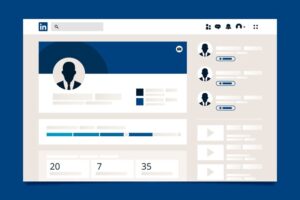Budgeting Made Simple: The 50/30/20 Rule Explained
Master your finances with the 50/30/20 rule. Balance essentials, enjoy life’s pleasures, and save for the future with this method.
Find financial stability and peace of mind!
Budgeting doesn’t have to be hard. The 50/30/20 rule makes managing your money super simple.
It’s all about balancing your essentials, enjoying the things you love, and saving for the future—without feeling like you’re always holding back. Learn more about it.

So, what exactly is the 50/30/20 rule?
It’s pretty simple: you divide your income into three categories: 50% for necessities, 30% for things you want (but don’t need), and 20% for savings or paying down debt.
It helps you live comfortably now while still planning for tomorrow.
50%: Essentials—The Must-Haves
First up, 50% of your income should go toward things you absolutely need. These are the non-negotiables—things that keep your life running. We’re talking:
- Rent or mortgage
- Utilities like electricity, water, and internet
- Groceries
- Transportation (gas, car payments, public transit)
- Health insurance and medical bills
- Minimum debt payments
If you find yourself spending more than half of your income on these essentials, it’s time to look at ways to cut back.
Can you downgrade your living situation, use public transportation, or cook at home more often? Small changes here could free up money for other things.
30%: Wants – The Fun Stuff
Next, 30% of your income goes toward the “wants”—the fun things in life. These aren’t absolutely necessary, but they sure make life more enjoyable. Think:
- Eating out or ordering takeout
- Entertainment (movies, concerts, streaming services)
- Vacations or weekend trips
- Shopping for clothes, gadgets, or things you don’t need but really want
- Upgraded services like premium internet or cable
Here’s where you have some room to play. If you’re trying to save a bit more, this is where you can adjust. Maybe eat out less or skip the fancy cable plan. You don’t have to cut out all the fun stuff, but being mindful of where your money goes can make a big difference.
20%: Savings and Paying Off Debt
The final 20% is all about securing your future. This part of your budget should go toward saving and paying off any outstanding debt. You could use it for:
- Building an emergency fund (ideally, 3-6 months’ worth of expenses)
- Contributing to a retirement fund (IRA, 401(k), etc.)
- Paying down high-interest debt faster
- Investing for long-term growth
The goal is to create financial security for yourself, so you’re not caught off guard if something unexpected happens, like a job loss or medical emergency. Starting this habit early can help you feel more secure and prepared.
How to Make the 50/30/20 Rule Work for You
Figure Out Your Net Income
The first step is to understand how much money you actually take home after taxes. This is your “net income,” and it’s what you’ll base your budget on.
If your income varies, calculate an average over the past few months to get a solid idea of what you’re typically earning.
Track Where Your Money Goes
Next, take a close look at where your money is going each month. You can do this by reviewing bank statements or using an app to track your expenses.
This will help you figure out where you might be overspending and where there’s room for improvement.
Set Your Budget Goals
Once you’ve figured out your income and spending habits, break your budget down using the 50/30/20 formula. For example, if you bring home $3,000 a month, this would look like:
- 50% for essentials = $1,500
- 30% for wants = $900
- 20% for savings = $600
Make Adjustments as Needed
If you’re overspending in one area, it’s time to adjust. Maybe you’re spending too much on entertainment or eating out.
Finding ways to trim your “wants” category can free up more cash for savings or other goals.
Don’t Forget About Savings
The 20% for savings might seem like a lot at first, but it’s crucial for your long-term financial health.
Focus on building that emergency fund first, and then shift your focus to saving for retirement or paying off debt.
Make it a habit to save regularly, so it doesn’t feel like a huge burden.
Wrapping It Up
The 50/30/20 rule helps you balance essentials, enjoy life, and save for the future. It’s about mindful spending and setting yourself up for long-term success.





